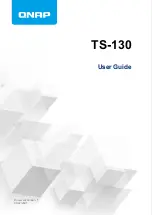
61
Table 23
Command output
Field Description
Peer
IP address of a neighbor.
Optimal Total
number
of optimal routes.
Aging
Total number of aging routes.
Garbage
Total number of routes in the Garbage-collection state.
Local
Total number of locally generated direct routes.
Total
Total number of routes learned from all RIP neighbors.
fast-reroute
Use
fast-reroute
to configure RIP FRR.
Use
undo fast-reroute
to restore the default.
Syntax
fast-reroute route-policy
route-policy-name
undo fast-reroute
Default
RIP FRR is disabled.
Views
RIP view
Predefined user roles
network-admin
Parameters
route-policy
route-policy-name
: Uses the specified routing policy to designate a backup next hop. The
route-policy-name
argument is a case-sensitive string of 1 to 63 characters.
Usage guidelines
RIP FRR is available only when the state of primary link (with Layer 3 interfaces staying up) changes from
bidirectional to unidirectional or down. A unidirectional link refers to the link through which packets are
forwarded only from one end to the other.
RIP FRR is only effective for RIP routes that are learned from directly connected neighbors.
Do not use RIP FRR and BFD for RIP at the same time. Otherwise, RIP FRR might fail to work.
Equal-cost routes do not support RIP FRR. RIP FRR does not take effect when the backup route information
is the same as the primary route information.
Examples
# Enable RIP FRR and use routing policy
frr
to specify a backup next hop.
<Sysname> system-view
[Sysname] bfd echo-source-ip 1.1.1.1
[Sysname] ip prefix-list abc index 10 permit 100.1.1.0 24
















































